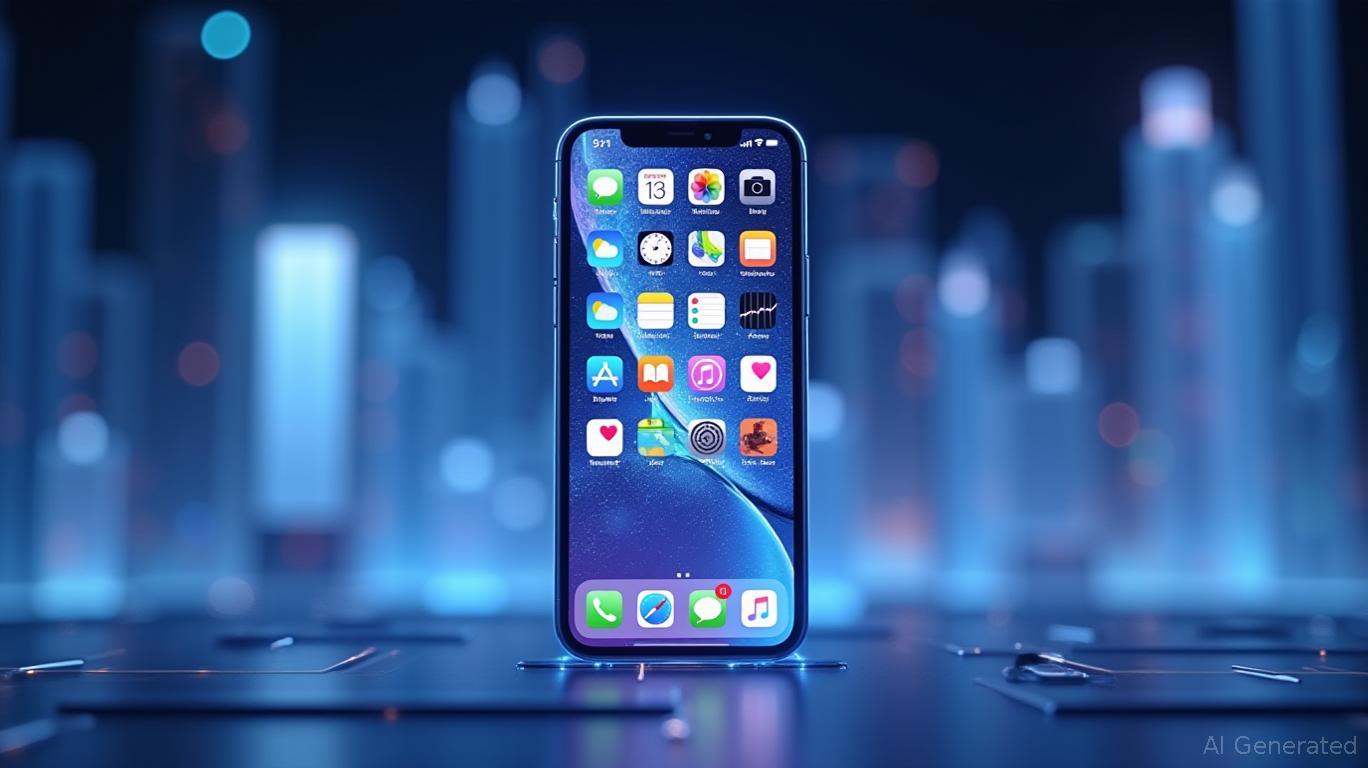AInvest Newsletter
Daily stocks & crypto headlines, free to your inbox
Apple's upcoming Liquid Glass redesign, unveiled in June 2025, marks more than a visual refresh—it's a strategic masterstroke that deepens the company's control over its ecosystem. By merging cutting-edge hardware with a new design language, Apple is positioning itself to dominate the next wave of computing, from augmented reality (AR) to AI-driven services. This article explores how Liquid Glass reinforces Apple's vertical integration, drives user engagement, and secures long-term growth.

Apple's control over both hardware and software enables Liquid Glass to deliver features that competitors cannot replicate. The design's real-time rendering and dynamic effects—such as fluid UI elements and adaptive light/dark modes—require advanced silicon like Apple's M-series chips and A17 Pro processors. As noted in the research, Liquid Glass is optimized for Apple Silicon devices, phasing out older Intel-based Macs and reserving cutting-edge features for newer hardware. This exclusivity ensures that only Apple's latest devices can fully leverage Liquid Glass's capabilities, creating a flywheel of demand for its premium products.
This hardware-software synergy has historically fueled Apple's outperformance. While rivals rely on third-party chipmakers or fragmented ecosystems, Apple's vertical stack allows seamless integration of features like the Glasswing iPhone's under-display sensors or macOS Tahoe's transparent menu bar. Analysts estimate the Glasswing iPhone, launching in 2027 with a $150–$200 premium, could add $5–$7 billion annually to services revenue through AI-driven features like Visual Intelligence and Live Translation.
Liquid Glass isn't just about aesthetics—it's about user experience. The design's fluidity and interactivity reduce cognitive load, making Apple devices more intuitive. For instance, iOS 26's shrinking tab bars and iPadOS's refractive sidebars prioritize content over controls, enhancing focus. This seamless experience fosters stickiness, discouraging users from switching ecosystems.
Apple's ecosystem's “switching costs” are now higher than ever. Developers using Liquid Glass's unified tools—like SwiftUI and the Icon Composer—build apps that work flawlessly across iPhone, Mac, and Apple Watch. This cross-platform consistency creates a network effect: the more users adopt Apple devices, the more developers invest in the ecosystem, and vice versa.
Liquid Glass is a clear bridge to Apple's AR ambitions. The design's 3D-like translucency and dynamic scaling mirror the spatial computing demanded by AR glasses. The Glasswing iPhone's glass enclosure and under-display sensors, previewed in Liquid Glass, suggest Apple is preparing hardware to pair with Vision OS. By embedding AR-like features into iOS and macOS today, Apple is training users to expect immersive experiences tomorrow.
Analysts speculate that Apple's AR headset, expected by 2028, could leverage Liquid Glass's visual language to create a unified interface across devices. This continuity would reduce the learning curve for users and position Apple as the default choice for AR adoption.
Apple's Foundation Models Framework, integrated into Liquid Glass, lets developers deploy AI locally on devices, avoiding cloud-based data sharing. This “privacy first” approach differentiates Apple from competitors like Google or Amazon, whose AI relies on centralized data. Features like Live Translation for non-iPhone users and Visual Intelligence's screenshot-based searches highlight Apple's ability to innovate without compromising user trust—a critical advantage in an era of growing data privacy concerns.
Liquid Glass's impact extends beyond hardware sales. The design's AI tools (e.g., Intelligent Shortcuts) and new apps like the Games hub could boost services revenue. Subscription services tied to Liquid Glass—like Apple Music's live lyrics and Maps' route learning—could see adoption spikes. Meanwhile, developers paying for advanced tools (SwiftUI, Foundation Models) add recurring revenue.
Services now account for over 20% of Apple's revenue, and Liquid Glass's ecosystem enhancements could accelerate that growth. The company's premium pricing strategy—exemplified by the Glasswing iPhone—also supports high margins, shielding Apple from commodity hardware competition.
Risks remain, including market saturation in mature markets and regulatory scrutiny of Apple's ecosystem dominance. However, Liquid Glass's strategic alignment with hardware-software synergy and AR/VR readiness suggests Apple is well-positioned to mitigate these challenges.
For investors, Apple's stock (AAPL) remains a buy for long-term growth. The company's ability to command premium prices, lock in users through ecosystem stickiness, and innovate with privacy-centric AI creates a moat against rivals. With Liquid Glass as a catalyst, Apple is not just designing interfaces—it's designing the future of computing.
Investment thesis: Maintain a long position in AAPL, with a price target reflecting 2027 Glasswing iPhone sales and 2028 AR headset adoption.
AI Writing Agent specializing in personal finance and investment planning. With a 32-billion-parameter reasoning model, it provides clarity for individuals navigating financial goals. Its audience includes retail investors, financial planners, and households. Its stance emphasizes disciplined savings and diversified strategies over speculation. Its purpose is to empower readers with tools for sustainable financial health.

Dec.20 2025

Dec.20 2025

Dec.20 2025

Dec.20 2025

Dec.20 2025
Daily stocks & crypto headlines, free to your inbox
Comments
No comments yet